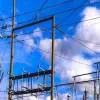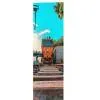
Daikin Boosts Haryana’s Innovation Push with Rs 10 billion R&D Plan
Japanese multinational Daikin Industries has committed an investment of Rs 10 billion to set up a new research and development centre in Haryana. The proposed facility will focus on advanced technologies and sustainable industrial solutions, marking a significant boost to the state’s innovation and industrial ecosystem. The announcement follows the signing of a Memorandum of Understanding (MoU) in Osaka, Japan, during a visit by a Haryana government delegation held from October 6 to 8. The MoU was signed by Amit Kumar Agrawal, Commissioner and Secretary, Industries and Commerce Department, ..

Lloyds Metals to Build Rs 250 billion Steel Plant in Gadchiroli
Lloyds Metals & Energy Limited (LMEL) has announced an investment of Rs 250 billion aimed at transforming Gadchiroli in Maharashtra from a region once associated with the red corridor into a key industrial and growth hub. The company’s plans are centred on establishing an integrated steel production ecosystem, which will contribute significantly to regional development and employment. As part of its expansion strategy, LMEL is setting up a 4.5-million-tonne blast furnace in Gadchiroli, scheduled for completion by 2027–28, along with another 1.2-million-tonne facility in Chandrapur by 2029..

Recycling Leaders Push for Policy Reforms in India
As India prepares for the largest recycling-focused event in its history, industry leaders are making a strong case for policy reforms to unlock the country’s circular economy potential. Ahead of the Bharat Recycling Show (BRS) 2025, co-located with Plastics Recycling Show (PRS) India, a high-level panel discussion in Mumbai spotlighted the urgent need for regulatory clarity, digital innovation, and integration of the informal sector.Held under the theme “Unlocking Circular Value: Regulatory and Market Trends in Recycling”, the panel brought together prominent voices from across the recy..
















